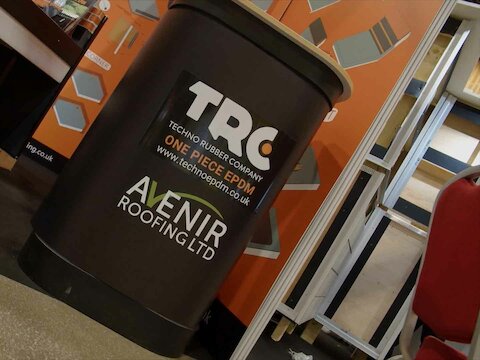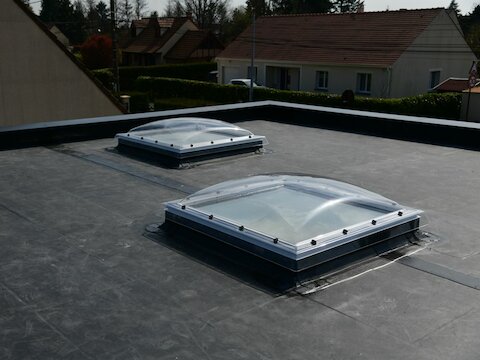Your Guide to Roof Work Safety

According to the Health and Safety Executive in the UK, roof work accounts for around a quarter of all deaths in the construction industry. Unfortunately, common occurrences include falling from height and being struck by moving or falling objects. In fact, between 2011-2016, almost 100 falling from height fatalities were recorded. Safety is important in any workplace, but in the roofing industry, it is crucial that guidance is followed.
To that end, we’ve put together some top tips for roof work safety that you should keep in mind while working on structures of all shapes and sizes.
Conduct a Risk Assessment
No matter the size or scope of a roofing project, someone with a trained background in roofing should perform a full risk assessment before work begins. Complex projects will need larger and more robust assessments, but some sort of assessment should be conducted regardless. Working positions and access points to the roof should be identified. The following should also be considered:
- The equipment needed for the entire project should be identified.
- Falls should be prevented using the correct safety equipment, or they should be minimised so that if accidents do happen, there are precautions in place.
- Dangers to the public should be examined, such as falling materials, and measures should be put in place to avoid potential accidents.
- Supervisors should be identified and training should be advised if needed.
The risk assessment should not leave roofers feeling uncertain about their requirements or the safety of the site. Planning is important and the risk assessment should inform and educate, resulting in a safer working environment.
Treat All Roofs as Fragile
As mentioned earlier in the article, falling from a height is the main cause of roofing-related fatalities in the UK, so this step is important. A supervisor or someone with enough experience should analyse the roof to determine that it is not fragile before work begins. Many factors affect fragility, including badly secured fixings, external atmospheric conditions and poorly ventilated roofs. A full examination should be conducted as a result.
Becoming complacent is often how people make mistakes. Adhering to this step could potentially save a life. The best approach to safety is a thorough plan from start to finish, which does require some level of competency. In the case of fragility, the ability to accurately determine which roofs are fragile ultimately comes from experience. As a result, it’s best to treat all roofing areas as fragile until an accurate examination is conducted.
Ensure Safe Access
Once it is determined that roof work can be conducted, a plan on safe access should be created and implemented. For larger projects, this may involve scaffolds or stair towers, as well as mobile access equipment if necessary. Smaller projects often only require ladders.
Scaffold: Should be installed and maintained by a team of fully qualified scaffolders. The structure should never be constructed or dismantled over people. If this is unavoidable, a road or pavement closure should be applied for. The structure needs to be stable too, so the surface should be level.
Stair Towers: These are extremely useful if installed correctly, yet accidents do happen every year due to incorrect installation. Lightweight towers may need to be tied to the building and an instruction manual should be followed during the setup.
Mobile Access Equipment: From scissor lifts to telescopic booms, mobile access equipment can make certain work easier, but strict safety precautions should be followed. This is especially necessary if roofers are leaving the machinery at a height.
Ladders: A roofing staple, ladders are a key part of kit for anyone in the industry, yet a third of all fall from height incidents involve them. Considering the time spent on the ladder, the length, the suitability and the use of other tools, you need to decide whether a ladder really is the safest choice, no matter the job.
Protect Yourself and the Public
Emergency procedures, materials handling, and the risk of falling debris should be accounted for. The Work at Height Regulations (2005) covers these emergency procedures, as there needs to be a rescue plan in place to recover someone if they fall. Using other equipment, such as those mentioned under the Ensure Safe Access heading, could be a part of the plan if needed.
Well-planned materials handling makes all the difference, as it decreases the time spent at height. Lifting appliances and waste tubes can be installed for efficiency purposes if needed. Access should be controlled however and those using the equipment should be fully qualified to do so.
As well as the above, the general public and roofers should be protected from falling materials. The previously mentioned waste chutes help with this. Debris netting may also be an option, but it does depend on the circumstances of your project.
Take Weather Precautions
The UK is known for its unpredictable weather day-to-day, so adverse weather conditions should be predicted. Conditions such as rain or snow decrease grip on surfaces and a sudden gust of wind may knock workers off-balance. The following should be considered while working on a project:
- Wind speed
- The previously mentioned safety measures and risk assessment.
- The height and position of the structure.
- The size of the material(s).
Use Certified Materials
In the roofing industry, materials matter. That’s why at Avenir Roofing Ltd, we only supply the finest Firestone EPDM to our customers. Known for its reliability and high-performance, it ensures that your finished project meets all required regulatory standards. Find out more or contact our team to see how we help roofers like you.




